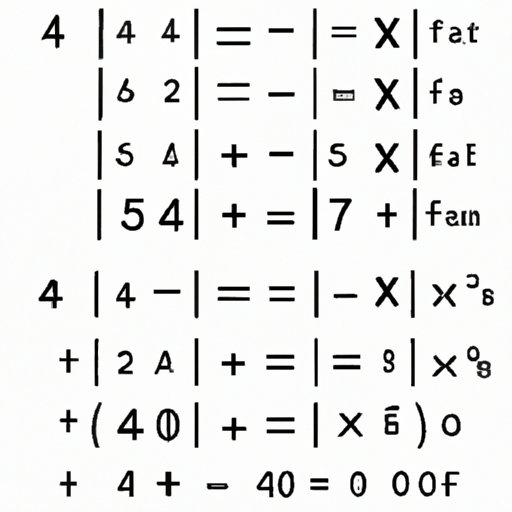
Introduction
When it comes to math, one of the most important skills to learn is how to convert decimals to fractions. While it may seem like a daunting task, it’s actually easier than you might think. Learning how to turn decimal into fraction is essential for anyone studying math, science, engineering, or any other field that requires numerical accuracy. In this article, we’ll take a comprehensive look at converting decimals to fractions. We’ll explore the basic steps, insider tricks and tips, step-by-step guides, and innovative ways to convert decimals to fractions. Whether you’re a student or a teacher, this article has everything you need to know.
Simplify your math: Convert decimal into fractions in 3 simple steps
The first step in converting a decimal to a fraction is to identify the decimal. For example, if you have the decimal 0.75, you would write it as 75/100. Next, you need to determine the denominator. In this case, the denominator is 100. Finally, simplify the fraction by dividing both the numerator and denominator by the greatest common factor (GCF), which in this case is 25. The end result is 3/4.
Converting Decimals to Fractions: Insider Tricks and Tips
Converting decimals to fractions can be tricky sometimes. However, there are a few tricks and tips that you can use to make it easier. For example, if you have a repeating decimal like 0.3333, you can write it as 1/3. Another trick is to look for patterns in repeating decimals. For example, if you have the decimal 0.171717, you can write it as 17/99. Additionally, using the LCD (lowest common denominator) can help simplify the process of converting decimals to fractions.
Math Made Easy: How to Turn Decimal into Fraction with Examples
Let’s explore how to convert decimals to fractions step by step. For example, if you have the decimal 0.125, follow these steps:
– Identify the decimal: 0.125
– Determine the denominator: 1000
– Simplify the fraction: 125/1000 = 1/8
Another example is the decimal 0.35:
– Identify the decimal: 0.35
– Determine the denominator: 100
– Simplify the fraction: 35/100 = 7/20
From Decimal to Fraction: The Ultimate Guide for Students and Teachers
Converting decimals to fractions is an essential skill for students to learn. Not only is it required for many math courses, but it’s also needed for many other fields. To make learning this skill easier for students, teachers can use the following tips:
– Explain the basic steps in simple terms.
– Provide examples of converting decimals to fractions.
– Use visual aids such as diagrams, charts, or graphs.
– Offer practical applications of converting decimals to fractions.
– Provide resources such as worksheets, tutorials, and practice problems.
Fractions made Possible: New and Innovative Ways to Convert Decimals to Fractions
Technology has made it possible to convert decimals to fractions easier than ever before. For example, you can use online converters or apps to quickly convert decimals to fractions. Additionally, there are many mnemonic devices such as “Dear King Henry Died By Drinking Chocolate Milk,” which can help you remember how to convert decimals to fractions. Another innovative way to convert decimals to fractions is by using virtual manipulatives. These are interactive tools that allow you to visualize and manipulate fractions.
Conclusion
In conclusion, converting decimals to fractions is a skill that anyone can learn with practice. By following the basic steps, using insider tricks and tips, and exploring new innovative ways to convert decimals to fractions, you can become a pro at this essential skill. Remember to practice regularly and make use of the resources available to you. Whether you’re a student or a teacher, learning how to turn decimal into fraction is a crucial step towards mastering math.





